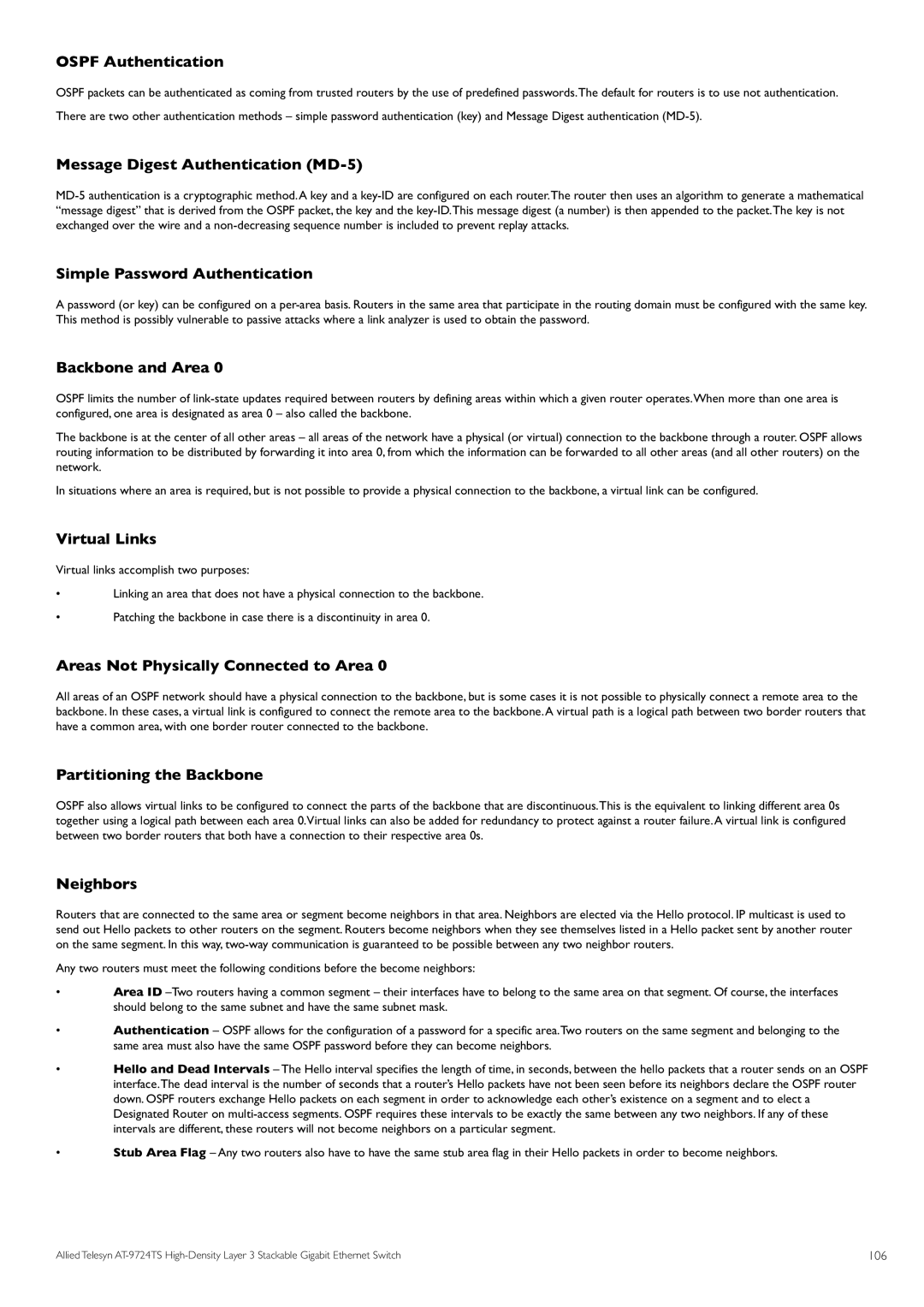OSPF Authentication
OSPF packets can be authenticated as coming from trusted routers by the use of predefined passwords.The default for routers is to use not authentication. There are two other authentication methods – simple password authentication (key) and Message Digest authentication
Message Digest Authentication (MD-5)
Simple Password Authentication
A password (or key) can be configured on a
Backbone and Area 0
OSPF limits the number of
The backbone is at the center of all other areas – all areas of the network have a physical (or virtual) connection to the backbone through a router. OSPF allows routing information to be distributed by forwarding it into area 0, from which the information can be forwarded to all other areas (and all other routers) on the network.
In situations where an area is required, but is not possible to provide a physical connection to the backbone, a virtual link can be configured.
Virtual Links
Virtual links accomplish two purposes:
•Linking an area that does not have a physical connection to the backbone.
•Patching the backbone in case there is a discontinuity in area 0.
Areas Not Physically Connected to Area 0
All areas of an OSPF network should have a physical connection to the backbone, but is some cases it is not possible to physically connect a remote area to the backbone. In these cases, a virtual link is configured to connect the remote area to the backbone.A virtual path is a logical path between two border routers that have a common area, with one border router connected to the backbone.
Partitioning the Backbone
OSPF also allows virtual links to be configured to connect the parts of the backbone that are discontinuous.This is the equivalent to linking different area 0s together using a logical path between each area 0.Virtual links can also be added for redundancy to protect against a router failure.A virtual link is configured between two border routers that both have a connection to their respective area 0s.
Neighbors
Routers that are connected to the same area or segment become neighbors in that area. Neighbors are elected via the Hello protocol. IP multicast is used to send out Hello packets to other routers on the segment. Routers become neighbors when they see themselves listed in a Hello packet sent by another router on the same segment. In this way,
Any two routers must meet the following conditions before the become neighbors:
•Area ID
•Authentication – OSPF allows for the configuration of a password for a specific area.Two routers on the same segment and belonging to the same area must also have the same OSPF password before they can become neighbors.
•Hello and Dead Intervals – The Hello interval specifies the length of time, in seconds, between the hello packets that a router sends on an OSPF interface.The dead interval is the number of seconds that a router’s Hello packets have not been seen before its neighbors declare the OSPF router down. OSPF routers exchange Hello packets on each segment in order to acknowledge each other’s existence on a segment and to elect a Designated Router on
•Stub Area Flag – Any two routers also have to have the same stub area flag in their Hello packets in order to become neighbors.
Allied Telesyn | 106 |
